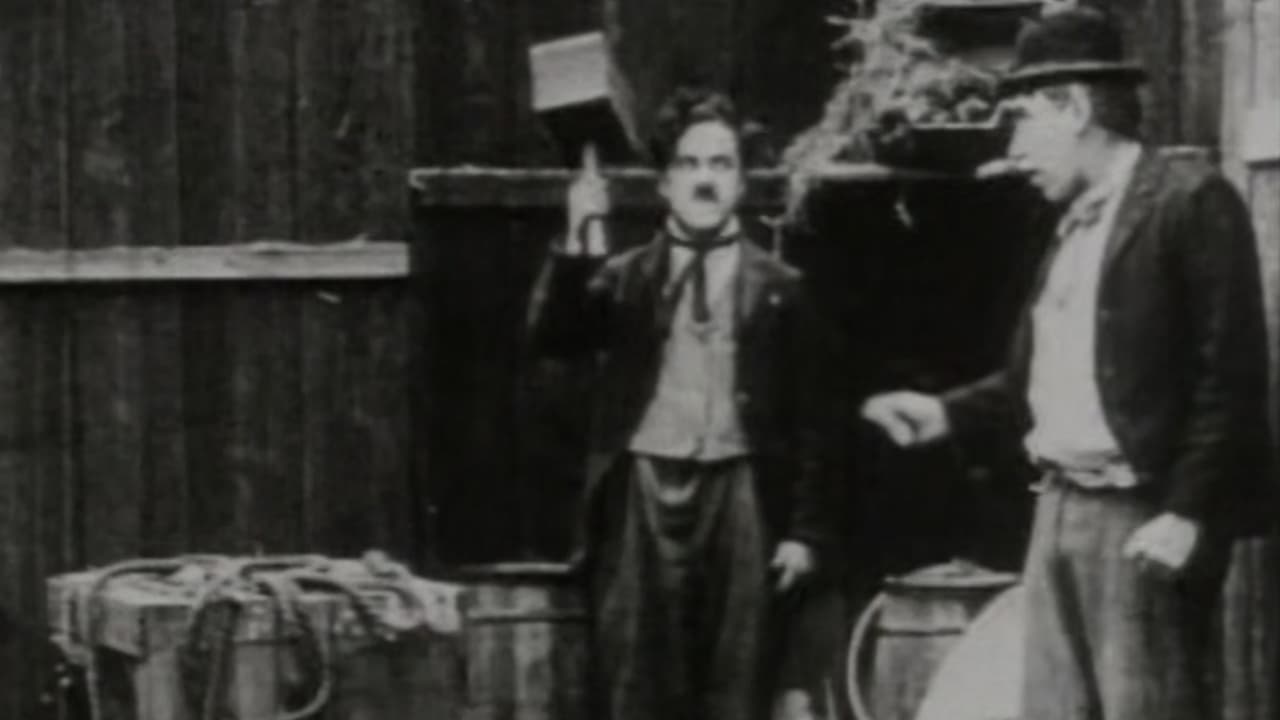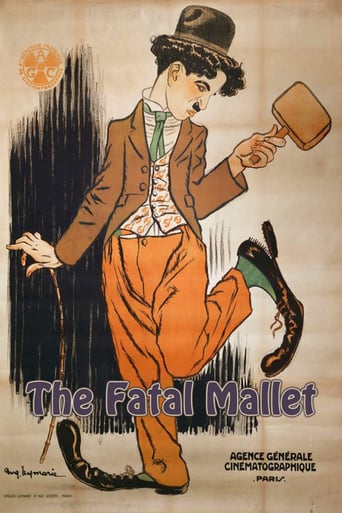

This Movie Can Only Be Described With One Word.
... View MoreBest movie ever!
... View MoreWhile it doesn't offer any answers, it both thrills and makes you think.
... View MoreThrough painfully honest and emotional moments, the movie becomes irresistibly relatable
... View MoreThis is typical Keystone with lots of butt-kicking, and the added bonus of skulls being smashed with big hammers. How strange were audiences in those days. Anyhow, we have in this film just about the best casting combination Keystone could muster. We have the coming genius Charlie, the divine Mabel, oafish Mack Swain, and the more than oafish Mack 'The Hick' Sennett. We may wonder why the latter cast himself in so many pictures, but he was there (according to Mack) by popular demand! We might unkindly ask 'Why?', but the truth is that he needed to keep an eye on naïve Mabel and the young and virile Charlie. Would the Englishman procure Mabel for another studio, and lure her from her aging Svengali? Mack was the first producer to realize Chaplin would go through actresses on the lot like a fox in a chicken coop. Charlie could do what he liked with Peggy Pearce, Peggy Page and Virginia Kirtley, but Mabel was Mack's personal property — touch at your peril.As usual Sennett is acting the part of Mabel's boyfriend, and the opening scene makes this amply clear. While they stand in what seems to be some sort of a grove, Mack clumsily goes through the amorous stuff. Then, who should come along but the licentious Charlie, someone Mabel seems to know. She introduces Charlie to Mack, but the former takes exception to the latter, and begins to push him around. Suddenly Charlie points off-camera, and while the stupid country boy looks away, he runs off with the fair maid. Behind a shed, Charlie starts to impress the stunningly beautiful Keystone Girl with a range of comical tricks, but Mack creeps up on them, and slyly kicks Charlie in the rear. Charlie is shocked, and obviously thinks Mabel did it, so kicks her in the derriere. Mabel is equally shocked, but soon recovers her composure, and, smiling sweetly, she beckons Charlie forward, then smashes him in the face. Predictably, Mabel runs off, but Charlie soon finds her being pushed on a swing by Mack. As he approaches, Mack, of course, rams the swinging Mabel into him, and all-out war begins. Charlie throws a brick at the couple, hitting Mabel in the face, while Mack gallantly ducks behind a tree. Plucky Mabel throws the brick back, and an angry Charlie confronts the couple. Of course, Mack has to take some action, and Mabel is delighted when her hero pushes up his sleeves ready to knock Charlie out. Unfortunately, it's Mack who gets knocked out, prompting Mabel to run off into the arms of Mack Swain, who has conveniently arrived on the scene. It is highly amusing to see Chaplin mock defeated Sennett by imitating his trademark spewing of tobacco juice. To cut a long story short, the film now enters mallet mode where Mack and Charlie first dispose of Swain with a whack on the head, then try to kill each other with mallets and bricks, while Mabel suffers collateral damage. An unusual scene then occurs, when a boy discovers Mabel alone, and takes the opportunity to manhandle (boyhandle?) the forlorn beauty. This is surely the luckiest kid in Edendale, for in no other film has any actor got to fondle the fair Mabel without getting a slap in the face. In any event, Charlie makes short work of the kid by drop-kicking him into performing a 108. Unfortunately, both Chaplin and Swain then end up in Echo Park Lake, while Sennett gets the goods in the form of Mabel the enchanting.There is plenty going on in this film, which was clearly padded out with numerous gags from the talented and experienced quartet – the audiences would have certainly have got their money's worth. As for Mabel she gets something of a respite in the picture, although she clearly collected a few bruises. In an interview many years later she said 'I am glad to report that many of those that kicked me and abused my person down through the years, have now been consigned to oblivion'.The lovely dress Mabel wore in the film, seems to be the one worn by Eva Nelson a few weeks earlier in Twenty Minutes of Love (with the bow on the front rather than on the back).
... View MoreMabel Normand again teams up with Chaplin in another slapstick comedy. Mack Sennett is on hand as a fellow suitor with Chaplin. The film starts immediately with violent brick throwing between Chaplin, Mabel Normand and her beau. Pretty soon there are three men after Mabel, trying to best each other or bop each other in the head. Charlie and Mack Swain end up all wet and Mack Sennett ends up with Mabel, surprise surprise. Many familiar slapstick moments are in this film, and the violent brick-throwing is a bit jarring and unnecessary. However, in silent comedy there was a need to provoke reactions in the audience rather then having to employ over-exaggerated mannerisms to get points across. I saw two versions of this film with reverse camera angles in each film, and I'm wondering if this was a mistake on the restoration part of it. One version appeared to be restored, although they both could have been. *1/2 of 4 stars.
... View MoreThe Fatal Mallet is full of unexplained, unnecessary, and gratuitous 1914 violence, like most of Chaplin's films for Keystone, but at least the plot is very easy to follow because it stays simple and doesn't try to tell more of a story than the technology of the time would allow. It begins with a lot of brick throwing between Chaplin and a man and wife (the wife does most of the throwing), until ultimately Charlie and the man are engaged in a brawl. Meanwhile, the wife finds another man, a huge brute of a man who is unaffected by Charlie and the first husband hitting him on top of the head with bricks. When he fails to notice that anything is happened, the two love scorn men are forced to regroup and come up with a new plan while the new guy makes his affections known to the woman.The two enemies now working together allows Chaplin to do some of his usual tricks and pranks but to actually have a reason to do them this time, and ultimately it turns into a brawl that is every man for himself, since they are all enemies to begin with. Chaplin's love of falling into the lake and throwing other people into the lake is certainly not forgotten here, but among the films of the time, I think this one stands out as one of the clearer and more entertaining ones, even though so much of it is the same as so many others.Also of note here is what I think might be the first appearance of a small boy in an important role in one of Chaplin's films. I say important role, however, only to mean that there is a kid in more than a background role. I am not sure if it is more disturbing than amusing, but I would lean toward amusing just because, even though the kid shows up just long enough for Charlie to punt him off screen like a football, he is clearly having a great time and his imitation of Chaplin's backwards fall is uncanny. Certainly not the best, but this is among the better of Chaplin's Keystone comedies.
... View MoreIn 1914, Charlie Chaplin began making pictures. These were made for Mack Sennett (also known as "Keystone Studios") and were literally churned out in very rapid succession. The short comedies had very little structure and were completely ad libbed. As a result, the films, though popular in their day, were just awful by today's standards. Many of them bear a strong similarity to home movies featuring obnoxious relatives mugging for the camera. Many others show the characters wander in front of the camera and do pretty much nothing. And, regardless of the outcome, Keystone sent them straight to theaters. My assumption is that all movies at this time must have been pretty bad, as the Keystone films with Chaplin were very successful.The Charlie Chaplin we know and love today only began to evolve later in Chaplin's career with Keystone. By 1915, he signed a new lucrative contract with Essenay Studios and the films improved dramatically with Chaplin as director. However, at times these films were still very rough and not especially memorable. No, Chaplin as the cute Little Tramp was still evolving. In 1916, when he switched to Mutual Studios, his films once again improved and he became the more recognizable nice guy--in many of the previous films he was just a jerk (either getting drunk a lot, beating up women, provoking fights with innocent people, etc.). The final evolution of his Little Tramp to classic status occurred in the 1920s as a result of his full-length films.The entire plot involves Charlie bonking Mack Sennett on the head with a mallet repeatedly. That's all,...really.
... View More